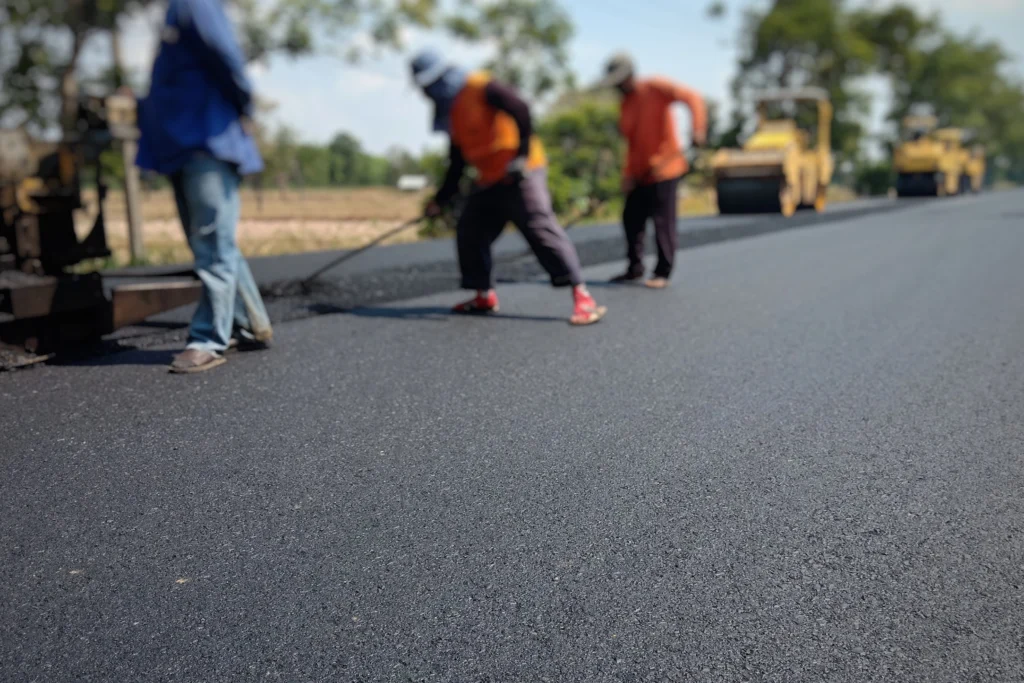Asphalt paving entails different actions such as creating infrastructure like roads, driveways, sidewalks, to other areas that might need a usable surface.
Regardless of what is being done, it can be said that asphalt is one of the best materials for such a construction.
This is because it offers a durable and cost-effective surfacing solution for driveways, car parks, roads, and walkways.
It is a great option because it can withstand harsh weather conditions, heavy rainfall, and frequent use.
This article gives more information regarding this option and the different steps needed to achieve durable results.
The Definition

Asphalt Paving done right
It can be described as a construction technique that is used to create smooth and durable surfaces for car parks, driveways, and other areas that receive vehicle and pedestrian traffic. It entails the use of a mixture of different materials that could include cement binder, gravel, sand, and crushed stone. This mixture is usually heated to high temperatures to ensure the best consistency and workability.
The Process
Preparation
This is the first step and can be said to be the foundation of ensuring durable results. The first thing done here is the site inspection, which entails looking at a variety of conditions like soil composition, drainage, and any existing infrastructure. After inspection, the preparation begins and the first thing done here is clearing the site to create a good working environment. Afterward, grading is done to ensure a smooth and uniform surface. A proper slope is created for water runoff.
Laying the Base Layer
After the initial site assessment and preparation of the working area, the task now begins with the laying of the base layer. This step entails applying the base layer to create a solid foundation. This layer consists of a variety of materials such as crushed stone and gravel, which are usually evenly spread across the surface that had been prepared in the first step. To ensure the overlay has adequate support and drainage, the thickness and composition have to be properly calculated.
Mixing
This third phase entails mixing the cement binder with aggregate materials. This creates a hot mix, which forms the top layer. The heating is done to create proper viscosity, allowing it to be applied with ease. As earlier stated, the mixture has to be properly calculated to help meet the required standards. This is done while paying attention to different factors like performance, type and amount of traffic to be expected, and different climatic conditions.
Compacting
After the hot mix has been laid on the prepared surface, it has to be compacted to achieve the needed smoothness, density, and structural integrity. This step entails the use of heavy rollers to compress the mixture. The goal here is to remove air voids and ensure uniform contact between asphalt and underlying layers. The result is a durable surface with a great load-bearing capacity and resistance to cracking and deformation over a long period. During the stage, the experience and expertise of the crew are needed so they can meticulously control the compaction process and adjust roller speeds to achieve the right density level without causing any surface irregularities. The end users will also enjoy the effectiveness of this step because they will have a smooth driving surface, which in turn helps promote safety.
Finishing
Finishing represents the final but still an important step of the process. It entails different tasks that help ensure the functionality, longevity, and aesthetics of the surface. After the compaction is complete, any irregularities or repairs are handled in this stage. Such issues can entail filling surface imperfections or trimming edges to achieve more even results. It can also encompass the addition of markings like crosswalks, lane lines, and symbols. This can be done with the use of high-quality equipment that is meant for this purpose. Traffic signs and barriers are also installed during this stage to create clear signage and guidance for road users. The finishing is not just about being done with the job but also promoting its overall functionality.
A sturdy and well-built pavement provides a smooth and reliable surface for both vehicles and pedestrians to use. This facilitates efficient transport and movement. When well-built and finished, it promotes safety for its users. When thinking of such an undertaking, think of asphalt paving because it is durable, resilient, and able to withstand heavy traffic from both vehicles and pedestrians. To achieve the full benefits of this material, be sure to work with experienced contractors.




